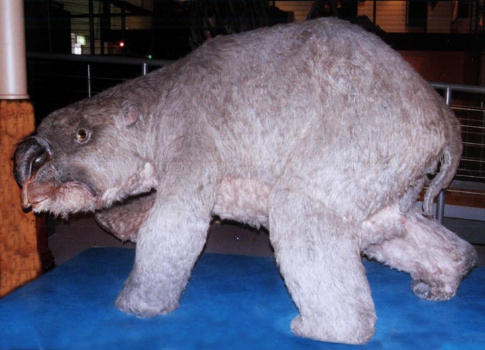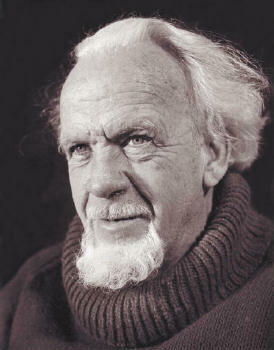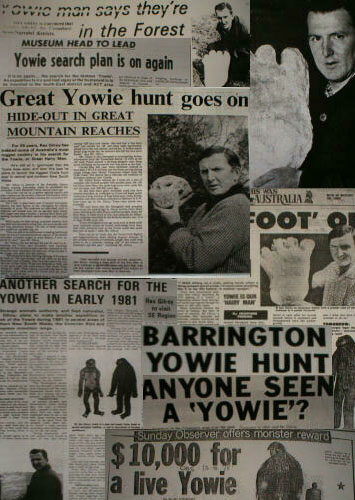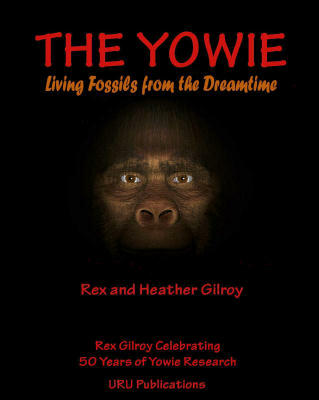Environment of the First Hominids
This article is composed of extracts from the 2007 book:
“The Yowie Mystery - Living Fossils From The Dreamtime".Copyright (c) 2007 Rex Gilroy, Uru Publications.
No study of our primitive human-like ancestors is complete without knowing something about the environment in which they lived.
Because we are primarily concerned with the ‘unknown’ Stone-Age past of pre-Aboriginal Australia, we shall confine ourselves to our part of the world.
As the authors have evidence to hand pointing to a Miocene-Pliocene primate/ancestral hominid fossil record within Australia, linked to a new theory involving the continental break-up in geological times, and which we shall turn to in the following chapter, we shall here confine ourselves to a picture of life in those times
Our fossil evidence for Miocene primate presence is sparse at present, but the environment of the time would certainly have been favourable to these animals.
As these ancient primates would have been herbivores [folivores], they would have routinely consumed significant amounts of insects on the leaves that they ate. As we humans are primates this information is relevant! Primate diets tend to be highly variable on a month-to-month basis in the wild. We cannot say whether the owners of the primate feet and hand slate fossil impressions [see next chapter] were entirely herbivorous.
They might have been omnivorous feeders and therefore might have displayed predatory behaviour towards other animals, even their own kind. As Harding [1981] reports, there is widespread evidence of predatory behaviour and meat consumption among non-human primates. “It is now clear that several primate populations make regular and substantial use of precisely the type of food [animal flesh] which the early theories described as instrumental in the emergence of hominids”.
Carnivorous feeding habits in our primate ancestors led to the use of the first crude weapons such as jagged bones and stones and broken tree limbs used as clubs, which in time led to the development of crudely flaked stone tools and sharpened saplings for spears etc, as our primate ancestors began to progress to a more near-human evolutionary stage.
By the dawn of the last great Ice-Age, the Pleistocene period, around 2 million years ago, following the close of the Pliocene period, and which was to last until about 10,000 years ago, a wide variety of unique species had evolved in Australia. Unlike the harsh conditions of the northern hemisphere, Australia did not experience extensive glaciation, this being confined to the Victorian-New South Wales Alps and also Tasmania.
The rest of Australia experienced a warm and temperate climate, the interior being a land of richly vegetated plains, forests, lakes and river systems. This environment supported a vast population of marsupial, bird and reptilian life, and they in turn provided an endless supply of food for our Stone-Age hominids. Photograph right: Aboriginal Girl wearing a Kangaroo hide Garment. Photographer Unknown. I will credit anyone who owns this photograph.
Among these species were giant kangaroos around 3m tall as well as more than one species of giant flightless birds of around the same height; and preying upon them all was the giant monitor lizard, Megalania prisca Owen, a 7m or more length, 700 kg weight goanna that was THE killing machine of the Australian Pleistocene. ‘He’ probably preyed upon our ancestors at every opportunity. There were other carnivores that our early hominids had to avoid, such as the marsupial lion, Thylacoleo carnifex Owen and these fearsome creatures also terrified our early Aboriginal people.
By the time the earliest Aborigines [Australoids] began arriving in Australia by around 68,000 years ago some authorities suggest this date could be extended to 120,000 years BP, based upon remains of ancient campfires, the idyllic Australian Ice-Age world was beginning to change forever. By 30,000 years ago many species of megafauna were becoming extinct as the interior of the continent began drying up in the wake of an increasingly warming climate, becoming a parched wasteland.
A monumental drought followed which was to last for several thousand years. Meanwhile the ice-sheets worldwide began to melt, causing the sea levels to rise, gradually separating Australia from New Guinea and Tasmania from the mainland; while the remaining land bridges were flooded to form the present-day islands of southeast Asia and Melanesia-New Zealand. There is much uncertainty among Australian scientists concerning the environmental and extinction events of the Pleistocene period. Their timings of these events varies considerably, so that dating for the disappearance of the megafauna has been placed at 35,000 years to as late as 10,000 to 5,000 years ago.
One example of extinction date disagreement among our scientists is the Thylacine, Thylacinus cynocephalus Harris 1808. As with the Marsupial Lion, the Thylacine had more than one subspecies. The Australian fossil record has so far produced five subspecies. Opinion has varied on the Australian mainland extinction of this marsupial carnivore, with dates varying between 7,000 to 3,000 years ago, while the last living Tasmanian specimen is thought to have died in Hobart Zoo in 1936. The species died out in New Guinea some time around 9,920 years ago, according to palaeontologists who base their belief upon fossil remains of that age.
Recently found fragmentary evidence and old eyewitness reports suggest to some scientists that the last mainland Thylacines may have actually lingered on in the Kimberley region of Western Australia as recently as 80 years ago! In fact, the species may still exist in remote parts of Tasmania if present day sightings claims and paw print plaster casts are to be accepted. There are also mainland sightings reports and paw print plaster casts from over widely-scattered regions suggesting this species still survives, primarily in the more remote regions of the vast eastern mountain ranges. Sightings claims in the New Guinea wilds similarly cannot be ignored. Here it appears, is one species of ‘extinct’ Pleistocene marsupial which has survived the fate of its Ice-Age relatives.
It has been argued that the Australian climatic deterioration was the principal cause of the disappearance of the megafauna. This argument hinges on the dating of the wet and dry phases back into the Middle Pleistocene [ie around 1 million years ago]. If indeed these phases can be shown to extend back that far, it is difficult to see why the later harsh environmental conditions alone would have been responsible for this great extinction. There is some evidence to suggest that some species of our megafauna, such as the Diprotodon, survived until as recently as around 6,000 years ago, well past the harshest dry conditions that afflicted much of the continent 18,000 years ago.Human activity has been blamed for the megafauna’s extinction event, but this has always been based upon the idea that Aborigines were responsible. Yet as this book clearly reveals, the Australoids were but mere late-arrivals on these shores, and therefore, as Australia had been occupied by far earlier hominids, the megafauna’s extinction had to have been a gradual event, extending over a far greater period of time.
Yet environmental conditions certainly played a major role in human evolution in Australia, for as the authors will demonstrate, in order to survive our ancestors had to develop better tools for hunting and skulls that developed along with the evolving brain. Communication was the next step, helped by our evolving throat anatomy. As we will show in due course, language evolved with Homo erectus in Australia and very probably well before ‘he’ entered Africa, following his spread out across the earth from his Australian homeland! The evolutionary process which led to Homo erectus in Australia was a long process, which the reader is about to learn as we turn to the evidence, incredible though it may seem, for a primate fauna evolution on this most ancient of continents
“The Yowie Mystery - Living Fossils From The Dreamtime".
“The Yowie Mystery - Living Fossils From The Dreamtime". Special Dedication. The Authors dedicate this book to the late Charles Melbourne Ward F.Z.S.; F.R.Z.S. known to his great many friends simply as ‘Mel’. Together with his wife Halley, he operated a natural history museum in the grounds of the Hydro Majestic Hotel at Medlow Bath for many years and also another established at Echo Point, Katoomba. It was ‘Mel’ who first taught me how to collect, record and study natural history specimens, beginning when I was aged 11 years old on holidays with my parents at Katoomba in 1954. Thereafter, every school holidays spent in Katoomba began with a visit to ‘Mel’ at his Medlow Bath Museum to inform him how my fledgling natural science studies were progressing!
As a result and after my parents moved from our Lansvale [western Sydney] home to Katoomba, the Gilroys and Wards became close friends. There was hardly a week which did not see me peddling my pushbike from our North Katoomba home up the Great Western Highway to see ‘Mel’ at his museum for more instruction. Mel Ward possessed a wide knowledge of the culture of the Australian Aborigines and that of the former local Blue Mountains tribes in particular.
He was also a firm believer in the “Hairy Man” and supported my researches in this regard. At my 21st birthday party, held at the Homesdale Function Centre, at Katoomba on Saturday night 8th November 1964, I well recall how my old friend, in front of a large gathering, congratulated me on my researches and the large natural science collection that I was forming and then said: “You’ve done a fantastic job Rex, BUT IT’S ABOUT TIME THAT YOU STARTED MAKING SOME BLOODY MONEY OUT OF IT” in a loud voice that brought the house down!
That following week, together with my father Mr W.F. [Bill] Gilroy, I began a search of local venues, which soon resulted in the acquisition of the lease from the Blue Mountains City Council of the Mt York Tea Rooms, outside Mt Victoria, the rest they as “is history”. Two years late, on October 6th 1966, Mel Ward was dead, having passed away in his sleep. He once said to my father that I was “the Mel Ward of Tomorrow” and I am certain that Mel would be pleased to know that I have indeed followed in his footsteps.
Mel led an adventurous life. The son of Hugh J. Ward, a famous Shakespearean actor of the early 20th century, Mel was encouraged to go on the stage by his father but Mel developed a passion for the natural sciences and his wealthy parents helped him become established. In his lifetime of achievement, Mel became recognised as a world authority on Crustaceans and an anthropologist. He was made a Fellow of the Royal Zoological Society of New South Wales and was pleased when I too became a member of the Society in 1963. He encouraged me, not long before his death, to take on the Presidency of the Society’s Entomological section, where I served for three years from 1966 to 1969.
That he achieved so many things in the course of his lifetime researches is remarkable, because like this author, he was an amateur with not one university degree to his name! I am certain that my old friend would be delighted at the fact that, together with heather, I am now writing and publishing book on the subjects he loved and on the Yowie in particular. He taught me never to blindly follow the textbook and dare to question dogmas and not be told what to think! I have certainly followed his advice. Knowing Mel Ward as I did I know he would wholeheartedly approve of the scientific approach of this book, therefore “Mel”
This Book is for You!
Rex Gilroy - Australian Yowie Research Centre, Katoomba, NSW.
Monday 25th June 2007I also present sensible advice to any future would-be Yowie investigators. The reader will also be awed at the great many discoveries my wife Heather and I have made in all our years together in the field. I feel privileged to be the founder of Yowie research and to have encouraged other, sensible researchers to follow my example. The search for surviving relict hominids in remote, hidden regions of the world, has been called the “last great search”, and it is both a fascinating and exciting one. Rex Gilroy may be contacted at the Australalian Yowie Research Centre, PO Box 202, Katoomba. NSW 2780. Ph 02 4782 3441 or email New Email Address as of June 2009 randhgilroy44@bigpond.com on or visit our website : http://www.mysteriousaustralia.com/ or http://www.australianyowieresearchcentre.com/ or http://www.rexgilroy.com/
Newspaper Articles on Rex Gilroy's Lifetime Search for the Australian Yowie
Newspaper Articles on Rex Gilroy's Lifetime Search for the Australian Yowie
Aboriginal/Koori Names for the Australian Yowie
To present the Yowie mystery in its proper context, relict hominid evidence from south-east Asia, New Guinea, other west Pacific Islands and New Zealand is revealed, demonstrating how the ancestors of these ‘manimals’ once spread out across the earth via land-bridges that formerly joined Australia/New Guinea/New Zealand with what is now island south-east Asia to the Asian mainland.
“Hairy man” was a name given by the Aborigines to any non-Aboriginal race with which they shared this continent, but the term centred primarily upon at least three basic forms. These forms were either the height of an average human being, an enormous man-like and also ape-like form. All were known by different names Australia-wide, but all meant either “hairy man” or “great hairy man”.






